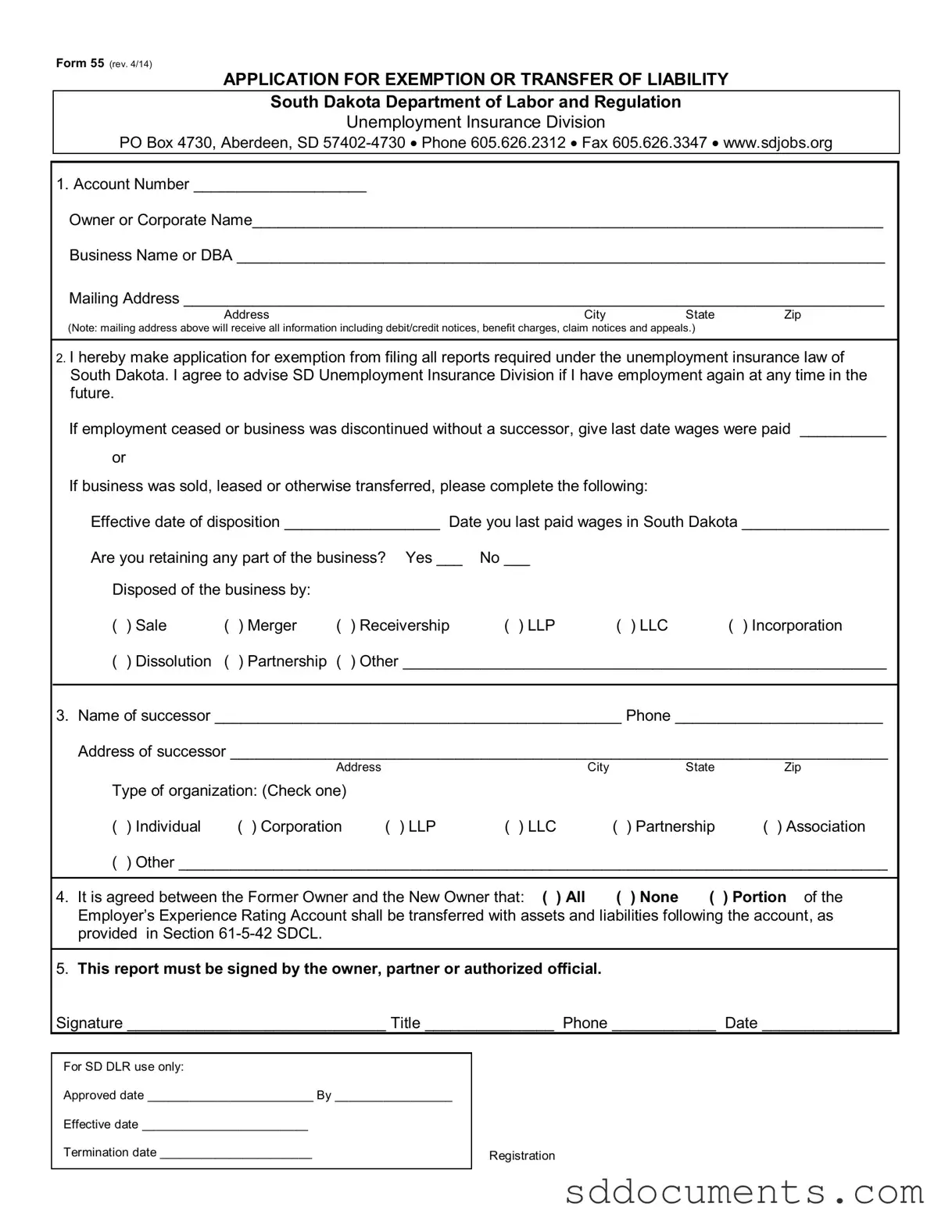Fill Out Your South Dakota 55 Template
The South Dakota 55 form, officially known as the Application for Exemption or Transfer of Liability, is a crucial document for businesses seeking to exempt themselves from unemployment insurance reporting requirements in South Dakota. This form must be completed accurately to ensure compliance with state regulations when a business ceases operations or undergoes a transfer of ownership. Timely submission of the South Dakota 55 form can help prevent unnecessary liabilities and streamline the transition process.
To fill out the form, please click the button below.
Customize Document Online
